
 |
Page 2 |
| This old mine car must have been used to haul timber or other equipment. These old cars are getting to be a pretty rare find. Most of the remaining ore cars are sitting in museums and people's front yards. And yes, we took turns pushing each other up and down the track. | 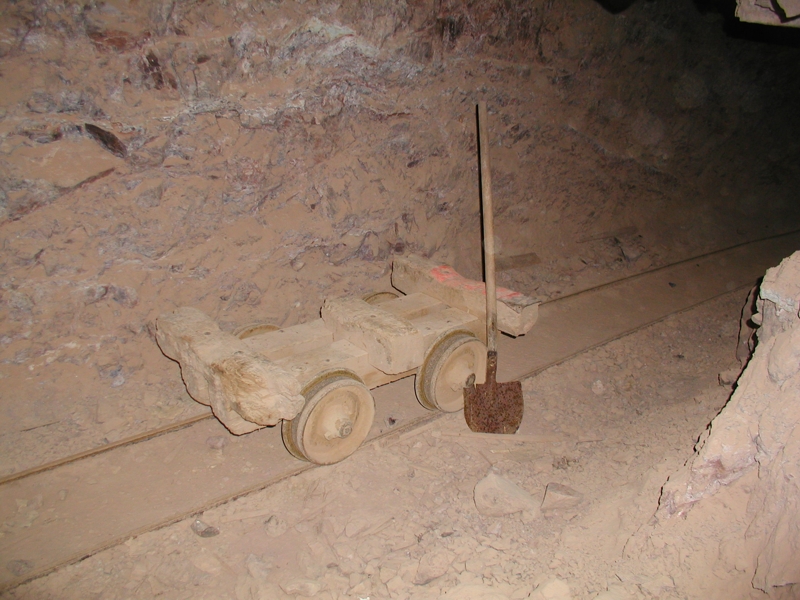 |
| Both inclines from the main level reach down to this working level. Bill is exploring a small "room" just below floor level. To the right of Bill is an ore hopper. A miner would sit in this room and load ore cars which would then be hauled back up the incline. The shaft continued downward but is blocked with debris so we can not reach the lowest level. |
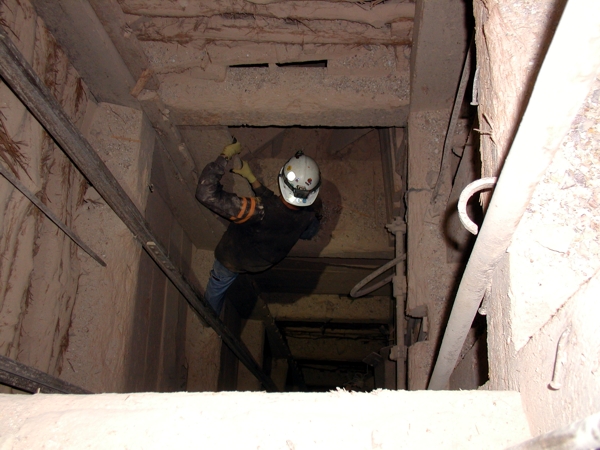 |
| The miner who loaded the ore skips would keep track of the number of loads using this peg board. The holes on the left counted loads of waste tailings while the holes on the right tallied ore. |
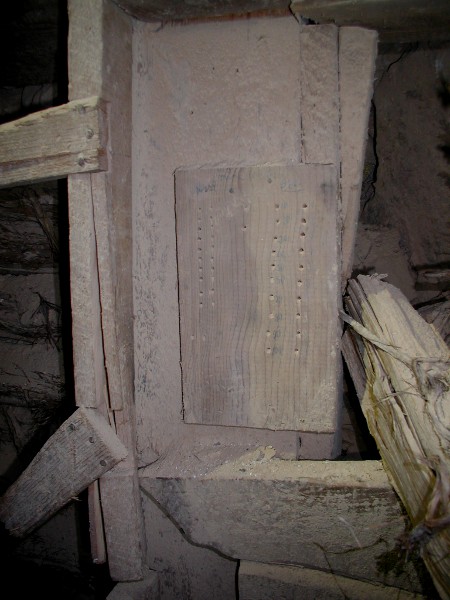 |
| After a few hours of exploring the lower level it was time to head back up. We use our climbing gear for the first 30 feet to reach the bottom of the ladder. Then we climbed the ladder for the next 200 feet. Here's Bill climbing out. |
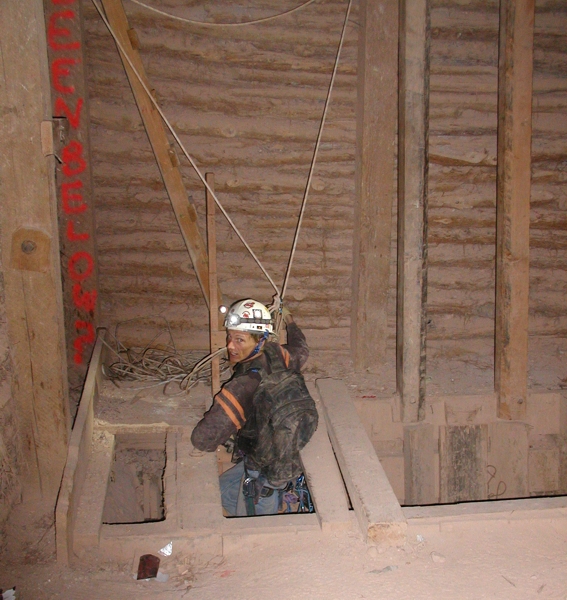 |
| As we wander around the mine there is amazing square set timber everywhere. I am fascinated by it. | 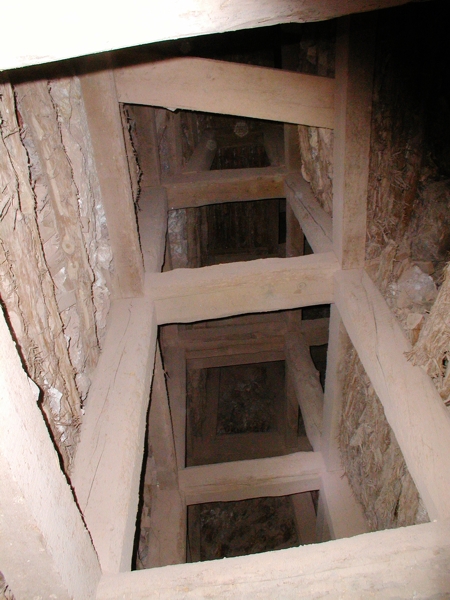 |
| We found a ladder leading down from the main level. Of course we have to take a look around. That is me climbing down the ladder for some exploring. | 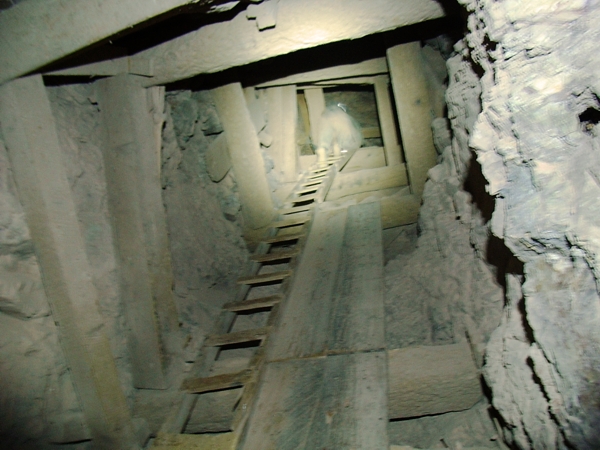 |
| There isn't much down here except this winze with an old hand winch. This is the first one I've seen other than in mining history books. | 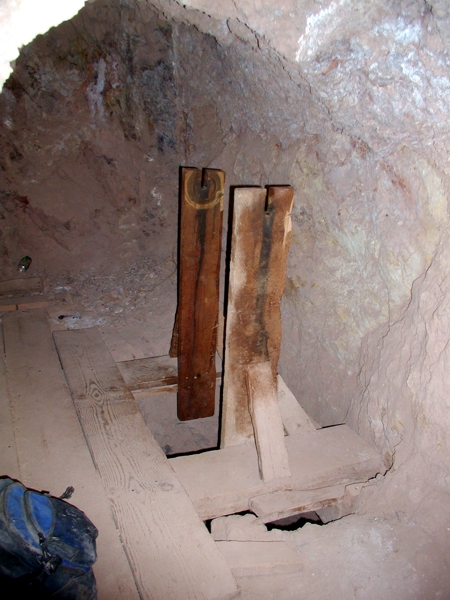 |
| Tony is taking a look to see if he can climb down. | 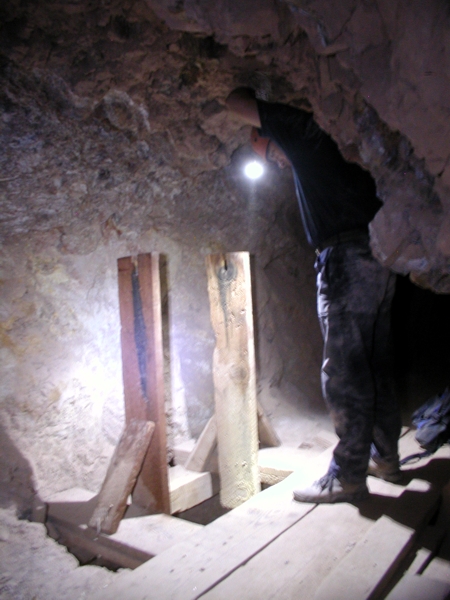 |
| At this point we don't have our climbing gear with us, but Tony decides to head down anyway. It's probably 50 feet to the bottom. I'm not quite so brave so waited at the top. Tony says that there is a large stope down below. It appears that a collapse has shut off access except through this old opening. |
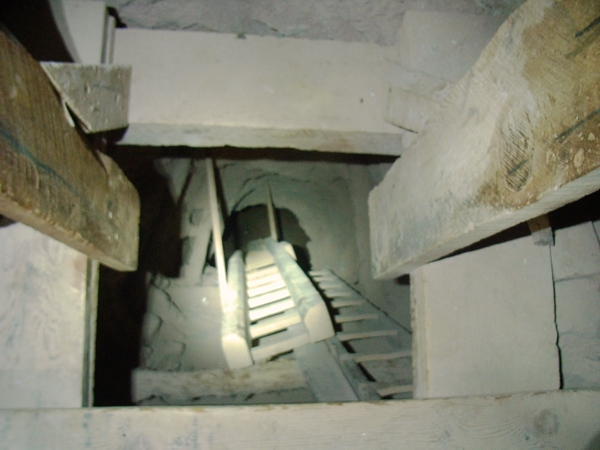 |
|
The ladder leads down into a huge stope that we had previously seen from the upper level. It appears that the entire chamber was filled with square set at one time. Some square set still remains but most has been removed. The timbers may look small in the photo but they are close to 10" square and 6 to 10 feet long. |
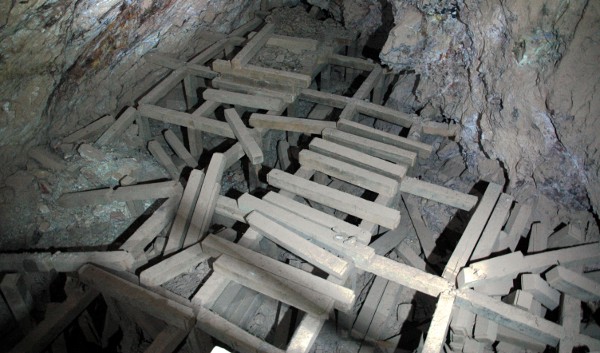 |
| Someone built this stack of timbers but I'm not sure why. It looks like cribbing but the chamber roof is another 30 above. The "Zig-Zag Ladder of Death" hangs in the background. That is how we get in and out of this stope. |
 |
| Although the square set doesn't look large in this picture, we stood inside the lowest set without hitting our heads. This set is close to 35 feet tall. | 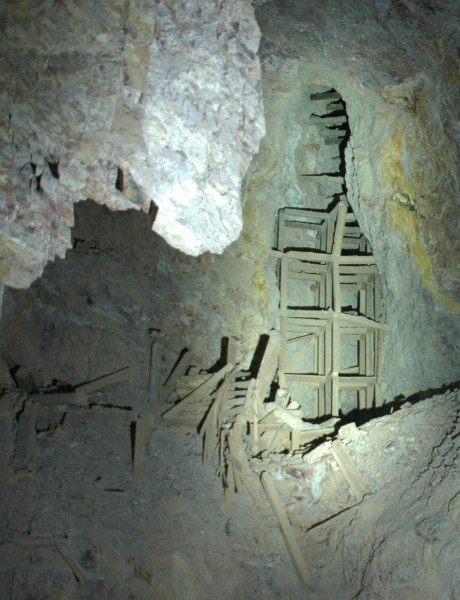 |
| We've rigged a rope as we descend down a small manway. | 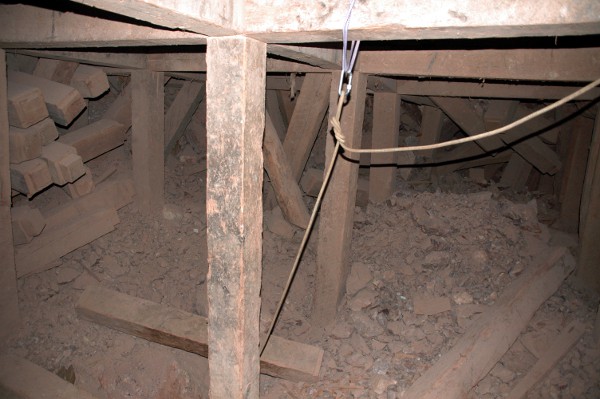 |
| Hard to tell what this old car was used for. It still rolls though. | 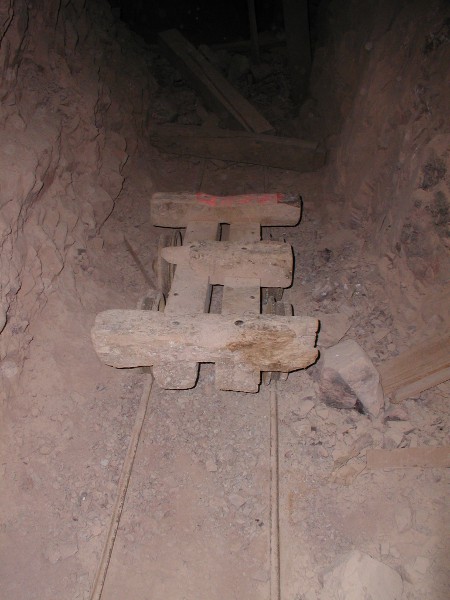 |
| Chris crawls through a collapse. Crawling around with tons of rubble above us it can be hard on the nerves. | 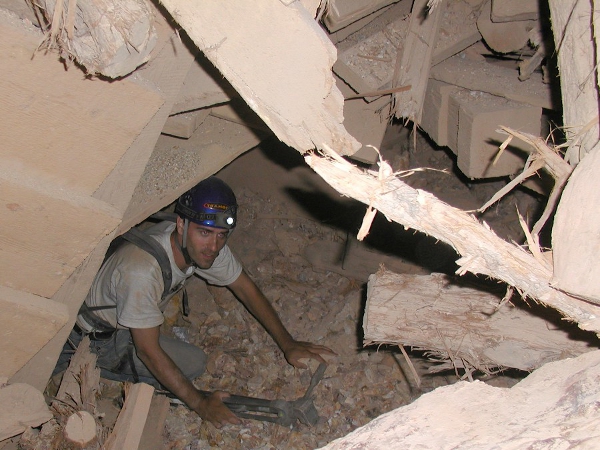 |
| Quite the pile of rubble. Looks like 'Travis' beat us here. It's sad that graffiti defaces so many areas of this mine. | 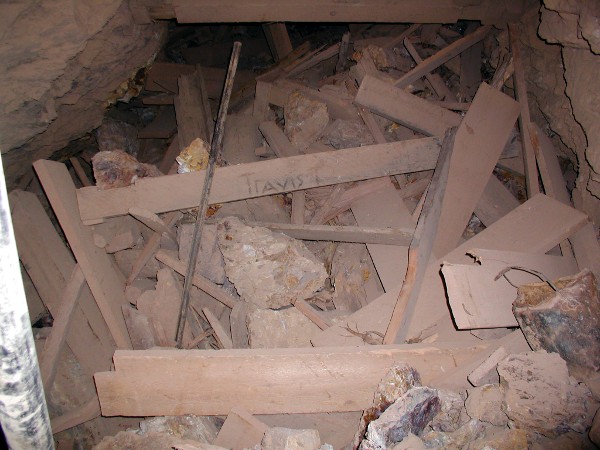 |
| We've been exploring for a few hours and it's time to head for the surface. Tony pops out of the manway. | 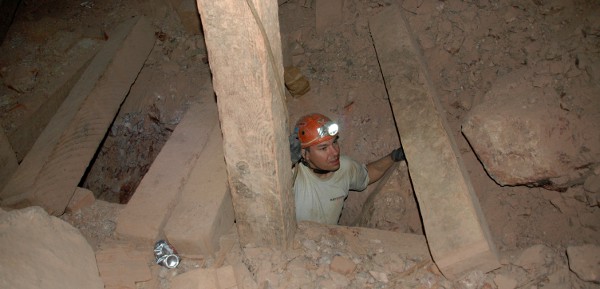 |
| Bill starts up the "Zig-Zag Ladder of Death". | 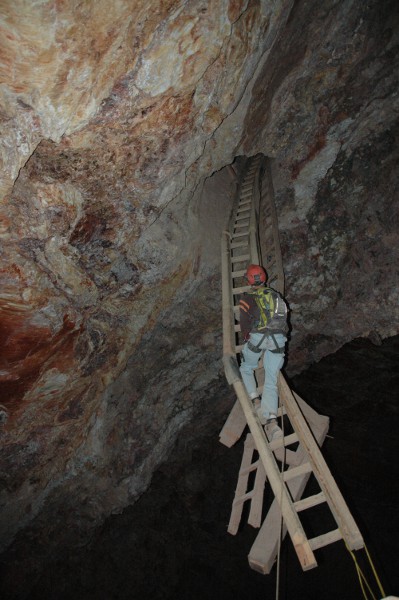 |
| Back up on the main haulage level. This must have been a very busy track while the mine was in production. | 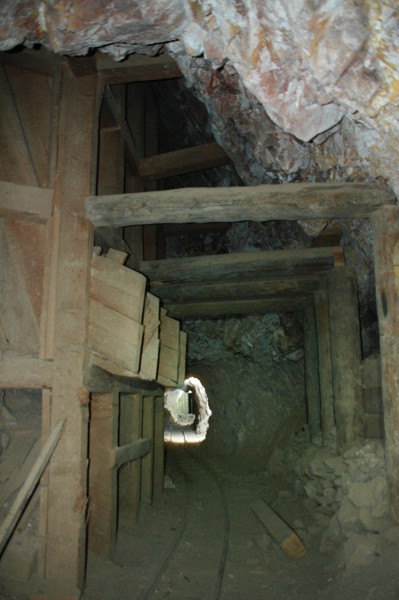 |
| More of the haulage level. As you might guess, this is a big mine. Lots of great exploring to be had. | 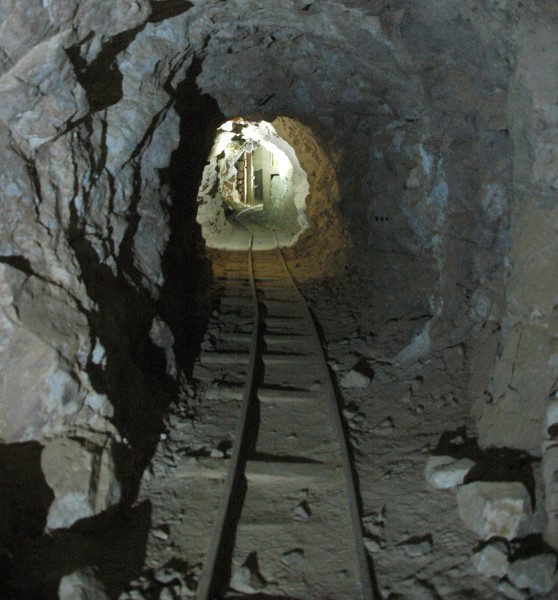 |
| This is one of the winch rooms on the main haulage level. Lots of heavy timbers. I love the carpentry that can be seen throughout the mine. | 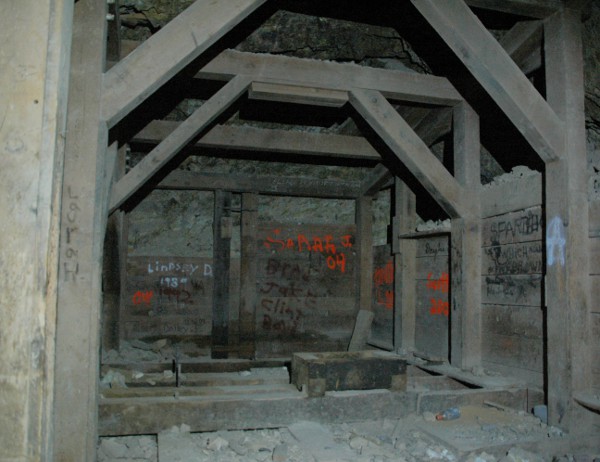 |
| Insulators tell us that the winch was electrically powered. | 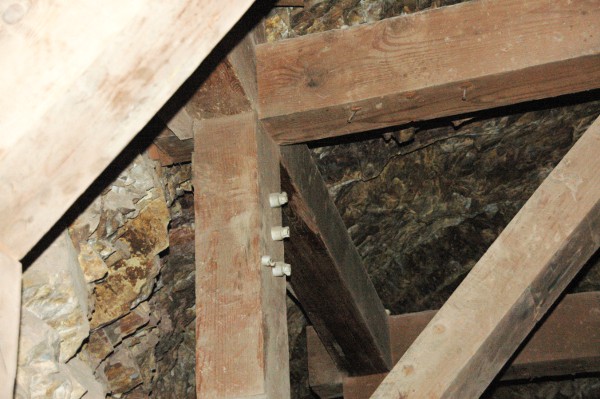 |
| A miner lost the heel plate off his boot. | 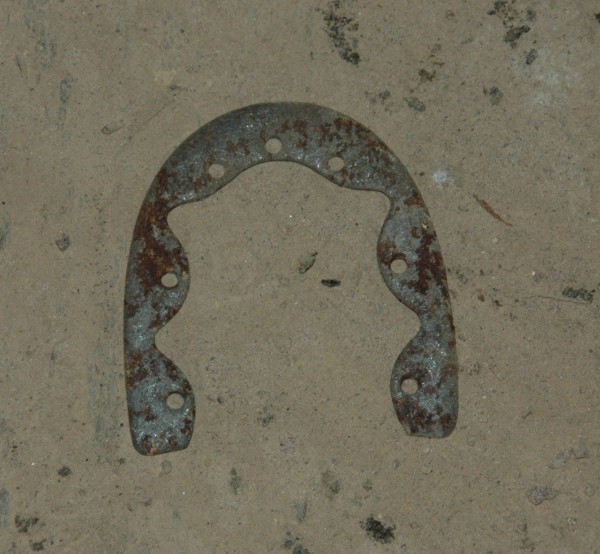 |
| Tailings piles from the mills stand in stark contrast in the valley. These tailing are a fine powder and bleached white by the use of acid in the extraction of gold from the ore. | 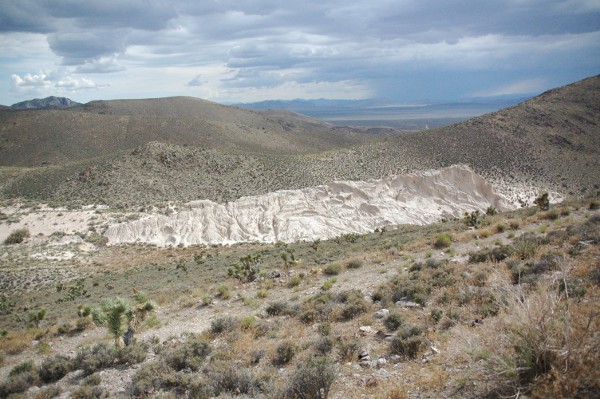 |
| I love coming across old materials like this rolled and riveted pipe. | 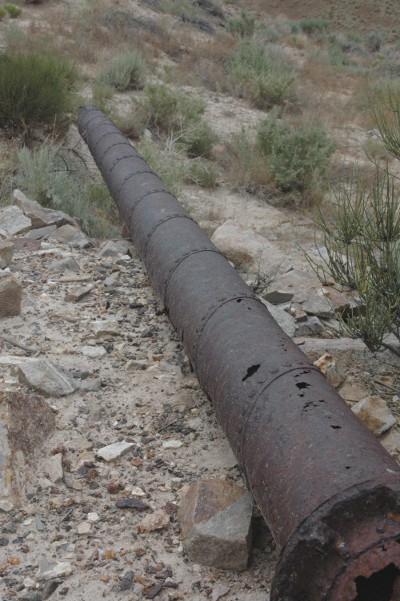 |
| This is part of the mill foundation. Although the mill was huge, much of it was dismantled and moved to another mining camp. The joinery of these huge timbers is amazing. | 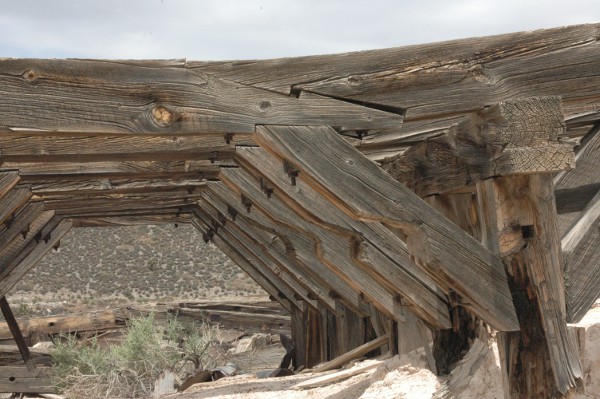 |
| Outside of the mine I found this old piece of air hose. It was constructed of multiple wraps of heavy cotton fabric, maybe canvas, wrapped in a metal winding. The metal would provide the strength to hold the compressed air and allow the needed flexibility for the hose to bend. | 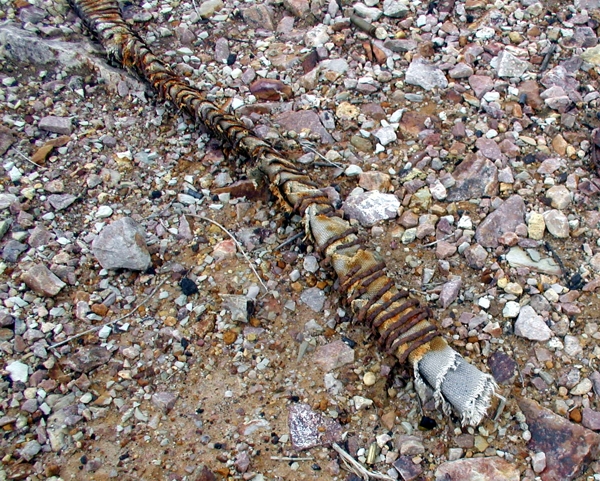 |